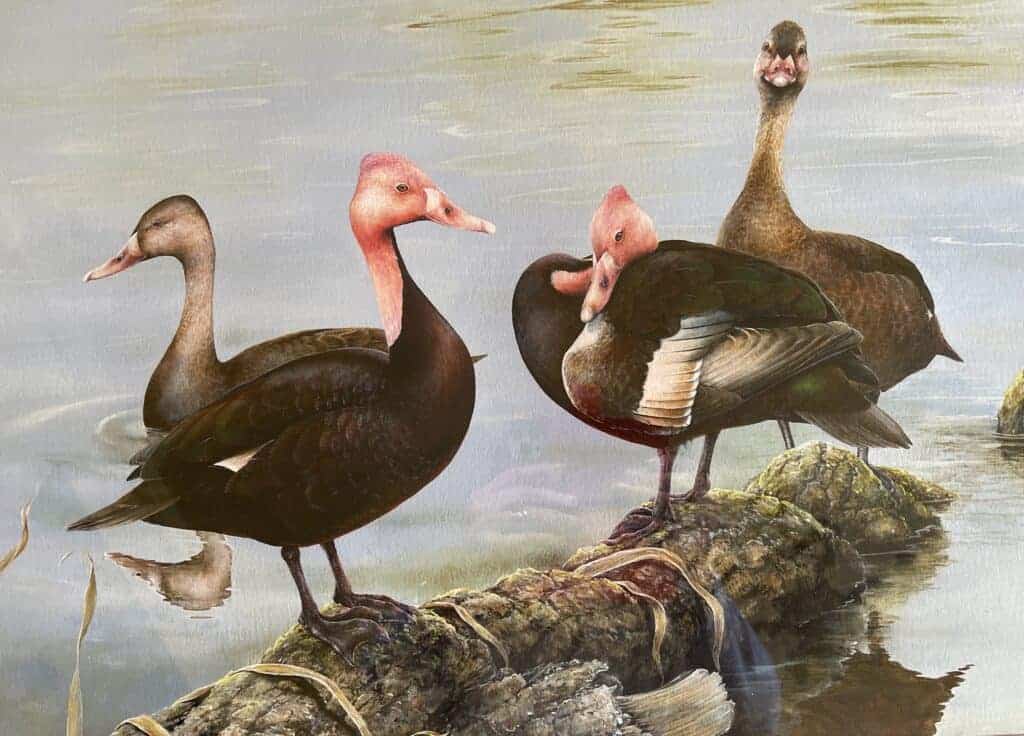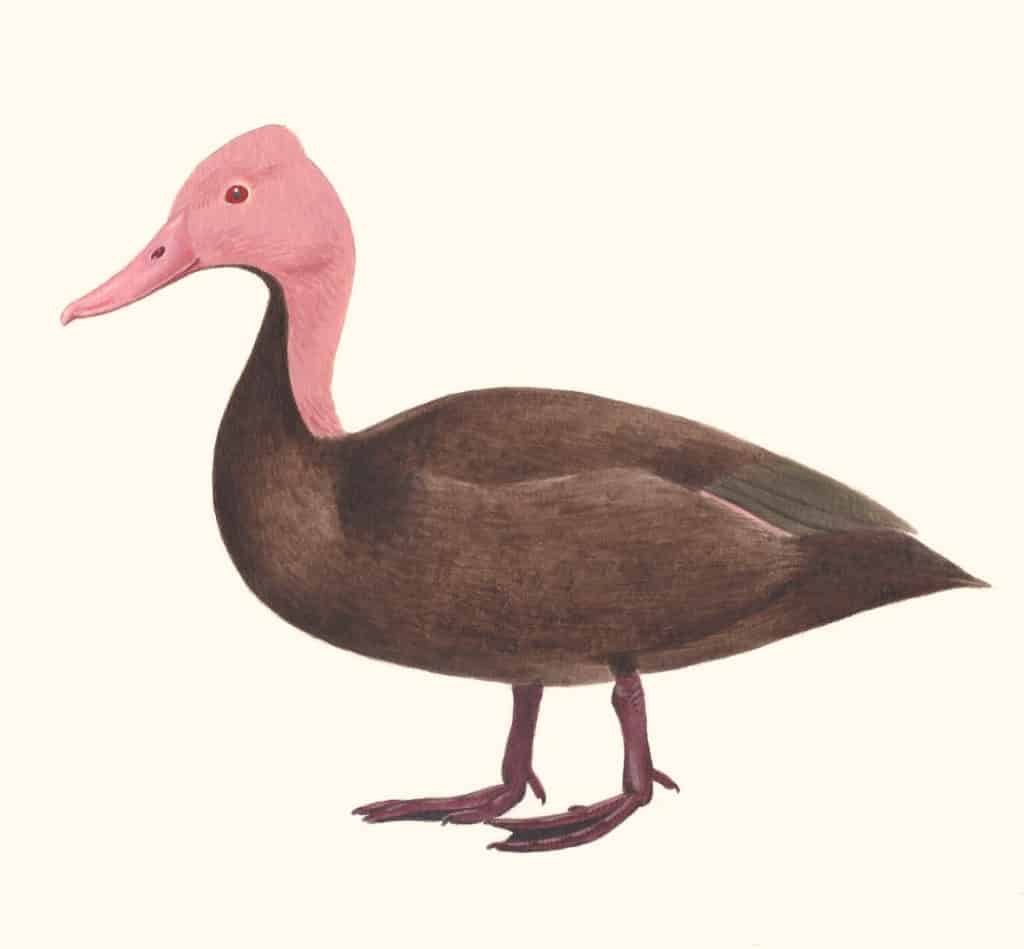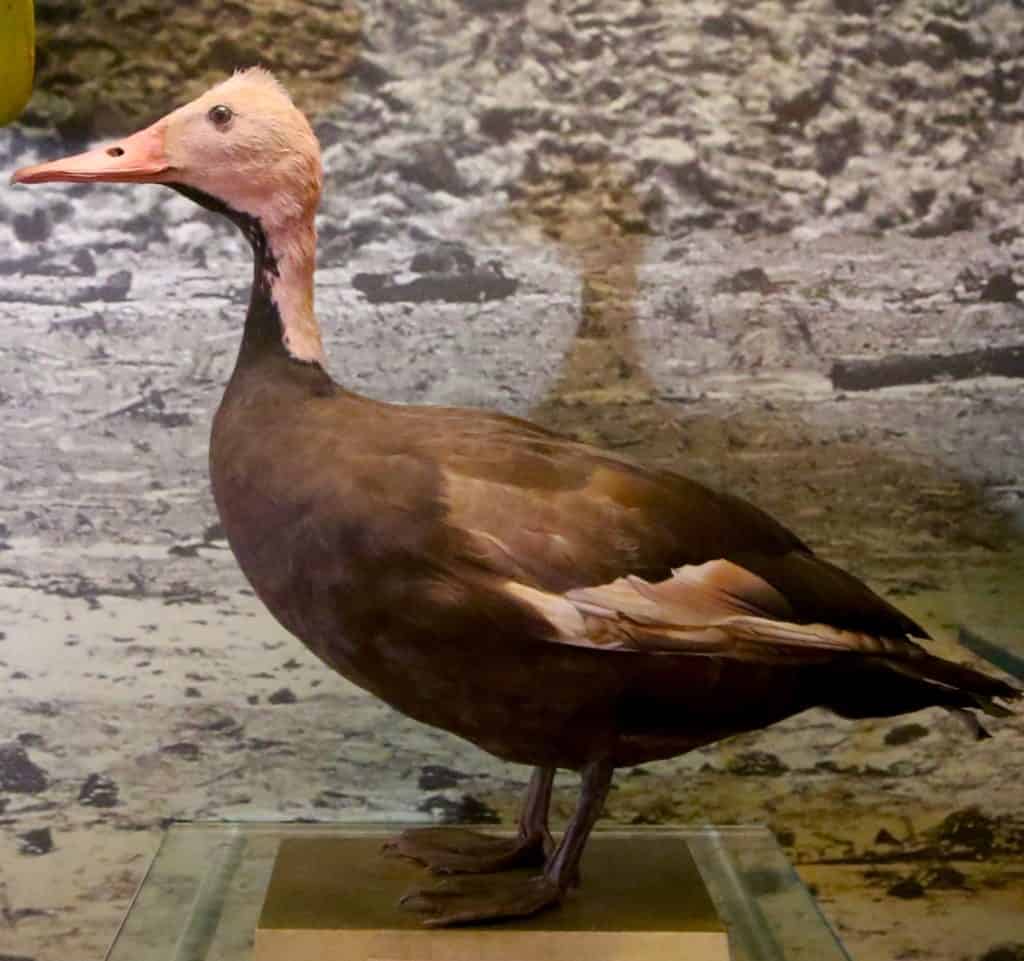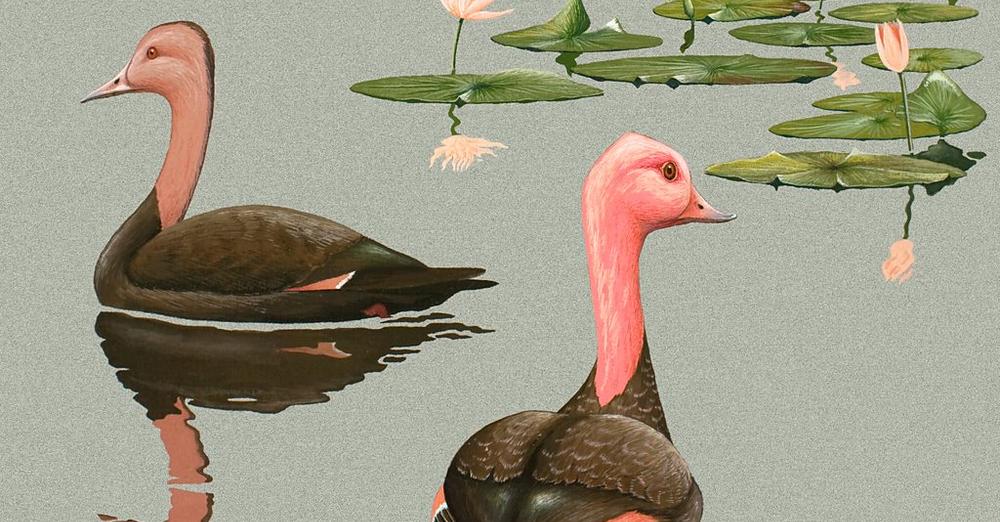Pink-headed Duck

Some specimens of the Pink-headed Duck were held in captivity in both England and India, however there was no breeding success. We wonder if the outcome would be different now, with our access to and knowledge of proper nutrition?

Rhodonessa caryophyllacea
This large but graceful diving duck was once at home on the plains surrounding the River Ganges in Bangladesh and India, and the swamps of Myanmar. The Pink-headed Duck has not been seen reliably since 1949.
There is possibly hope that a few individuals survive in the inaccessible areas of swampland in Myanmar. Numbers would most likely be fewer than 50, so it is listed as Critically Endangered. Because of the possibility of survival, the species is still listed by BirdLife International and also the Handbook of Birds of the World.
This is (or was) a lowland species. Possibly preferring secluded and overgrown still-water pools, marshes and swamps. The Pink-headed Duck appears to be omnivorous, feeding by dabbling and diving for animal and plant matter.


The breeding habitat of the Pink-headed Duck is (or was) lowland marshes and pools in tall-grass jungle. The nest is built amongst grass. The eggs, six or seven in a clutch, are very spherical and creamy white.
Share this page